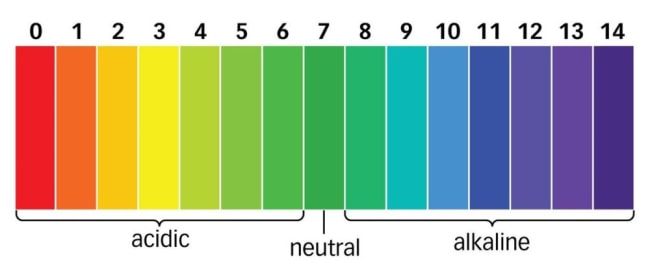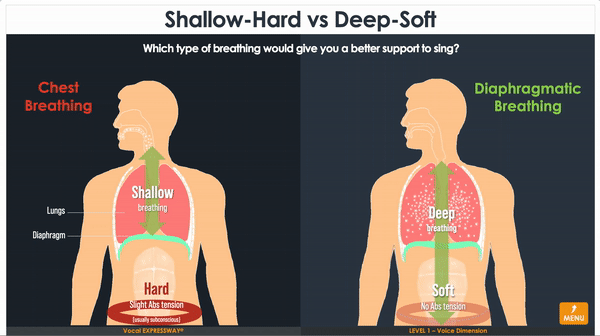Ever wondered about the science behind breathwork? We have with us Dr. Ajita Misra to answer a few questions in breathwork and guide us through this journey. She is a cardiorespiratory physiotherapist who did her graduation in physiotherapy. Her mom is asthmatic, and she had always seen her dealing with asthmatic attacks and managing them with asthalin and medicines, which were not very helpful. There were times when they had to hospitalize her to get her asthmatic attacks in control. That was the time when she decided to do her masters in cardiorespiratory.
After doing her master's, she realized she was back to square zero. Because in physiotherapy, they are not taught anything about dealing with the actual pathology of asthma. So she started searching around. She came across the Papworth, Buteyko, BradCliff breathing technique. She felt that Buteyko could help her mom. So she started researching it. She did her research on the effects of Buteyko breathing in asthmatic patients. She did the research in Army Hospital Research And Referral, New Delhi. That was the first research on Buteyko in India. The entire study was conducted on the army. She got it published in the Indian Journal of Occupational Therapy and Physiotherapy. After that, the Buteyko Clinic people offered her a fellowship. She was able to use Buteyko for my patients, but she wanted to learn more. She joined the master trainer course and is a certified practitioner now. She sees cases online from the US, Hyderabad, Chennai, and more every day.
First, we will try to understand the basic science behind breathing.
What happens during breathing in our body?
Out of all the physiological functions our body performs, every except one is involuntarily affected by the brain. There is only one function that goes both ways, brain to the body, and vice versa, respiration.
Imagine a lion standing in front of you. Your mouth will become dry, your body goes into a fight or flight reaction, and all you need to do is hold your breath for a few seconds and release. Do this a few times, and your parasympathetic nervous system takes over, you can relax, and your mind becomes clear. This is how breath can control our minds.
"Do a small experiment - wear a pulse oximeter on your finger and hold your breath for a few seconds. On releasing it, you should notice an increase in O2 saturation. Here’s how it works - Your muscle is working out and producing CO2. Blood rich in O2 reaches the muscle, but if the muscle doesn’t have enough CO2, blood won’t supply the required O2. For us, CO2 is a waste gas, but if we keep trying to wash it out, your body won’t get the necessary oxygen even if it is present in the blood."
This busts an essential myth we have - we think CO2 is a waste gas, and we should try to eliminate it as much as possible. But most of our breathing rate is governed by CO2 since O2 saturation remains more or less constant (in everyday situations). CO2 is an acidic gas, and to measure the amount of acid in a solution, we have a measurement unit known as pH level. The lower the pH level, the higher the amount of acid. So if the pH level of blood is low, it means we have relatively more CO2. Now we will see the role of pH level in oxygen carbon-dioxide exchange. We will explore how the hemoglobin (present in the blood) releases and absorbs these gases.

We need to think of O2 and CO2 saturation in the blood and whether it is actually reaching the muscles and tissues and playing its role there. Hence many breathwork practices focus on slow deep breathing, which increases CO2 in our body and helps deliver oxygen to the muscles. It is essentially carbon dioxide, not oxygen, which controls our respiratory rate.
Importance of pH level of blood
CO2 governs pH level. Most of our systems are not sensitive to O2. There is a liquid in our brain called CSF (cerebrospinal fluid). If O2 dips a little, there is no change in its response. But if CO2 rises, it immediately reacts and gives signals to the brain stem. It wants you to breathe more. Hypoxia (decrease in oxygen) is not the problem. Hypocapnia (decrease in carbon dioxide) or hypercapnia (increase in carbon dioxide) is the problem. If you keep washing out CO2 from the body, it will disturb the pH levels.
"The problem is not the pH but the barter system that takes place in hemoglobin. Hemoglobin doesn't like staying empty. It wants its hands to be full. When blood comes from the lungs to the body, hemoglobin's hands are full of oxygen. If you give hemoglobin CO2, it releases O2 and takes CO2. Hemoglobin's affinity for CO2 is much more than O2. Hence it immediately takes up CO2. If you don’t have CO2, it keeps its hands full with oxygen."
When CO2 comes out as a byproduct (from the tissues), it mixes with water. The following reaction takes place: CO2 + H2O -> H+ + HCO3-. H+ is acidic and HCO3- is alkaline. Since blood has more CO2, the pH of blood falls. When it takes CO2, the blood becomes acidic, and acidic blood leaves O2. The moment it picks up CO2, it gives out H+ ions, making it a little bit acidic, and when this happens, it releases oxygen. When this blood goes to the lungs, CO2 goes back to the lungs, oxygen comes in, and the pH is restored.

If you are confused by all this, the simple thing it tells us is you need a certain level of CO2 in your body to function correctly. Our respiration is mainly sensitive to CO2. I hope you would have deleted the common myth of "CO2 evil O2 good". This is also one of the fundamental issues behind people with asthma and broncho constrictions. Their default respiratory rate is very high, which leads to a loss of CO2. This loss causes them to breathe more hard, further decreasing CO2, leading to a lossy cycle.
Now we will discuss some essential tools to keep in mind while thinking about any breathwork practice.
Thinking framework behind breathwork
Biomechanics - This is related to the diaphragmatic movement and how you breathe. Your diaphragm contracts, and your lungs elongate. Due to this, the pressure drops, and air flows in, leading to inspiration. Approx. 500 mL (tidal volume) of air flows in due to which ribs flare up. When asked to take a deep breath, most people do it wrongly. They try to suck in air forcefully and swell up their chests. On the other hand, a deep breath is simply breathing with your diaphragm (or belly). When you breathe in, your belly should come out and vice versa. Deep breathing is relaxed and straightforward, keeping tidal volume the same.

Biochemical - If you wash out too much CO2, pH becomes alkaline. CO2, when reduced, leads to spasms (muscle becomes tight) of smooth muscles (these are the involuntary muscles). These smooth muscles are also present in blood vessels. Due to less CO2, the space in blood vessels decreases, leading to bronchoconstriction. Blood circulation will reduce, leading to labored breathing. Hypocapnia (less CO2) can be dangerous. It becomes challenging to take in air and exhale out.

Psychosomatic - When stressed, our heart rate and respiratory rate rise, our mouth becomes dry, and the only thing that is under our control is respiration. You can’t control your heart rate or any other involuntary response. You can tap into the parasympathetic nervous system if you do short breath holds.
For asthmatics out there, the Buteyko breathing method is one of the methods you can try. It essentially helps you decrease hyperventilation (or high respiratory rate), due to which your CO2 levels reduce considerably. There is a range of breathing techniques for you to explore that might serve your personal needs. You have to keep the three essentials that we discussed in mind for any method.
Nasal vs. Mouth Breathing - Buteyko method also emphasizes vastly on nasal breathing. When we breathe via the mouth, we lose a lot of carbon dioxide. This has to do with the biochemical part of our framework. Many people prescribe using mouth tapes to tape at night for nasal breathing. The more we breathe through the mouth, the more our nose remains unused and gets congested. It’s a use it or lose it organ. So by taping the mouth at night, the body is forced to breathe via the nose, so nasal congestion will also decrease.
So many breathing methods - How to choose!
So for focus and in general, how do they decide which breathwork practice they should go for?
"Focus and concentration are directly connected to mental status - how you feel at a particular time. If you are stressed or tired due to lack of sleep, it affects concentration. Find out exercises that help you in sleeping well. Yawning, for example, happens due to increased CO2, and the brain is trying to wash out the CO2. If you want to calm down your brain during sleep, go for diaphragmatic breathing, and slow down your respiratory rate. If you can do that, your brain will automatically go in relax mode. You wont be as stressed as you were. CO2 in the blood is just like a sleeping pill. Whenever a student needs to focus on a particular breathing exercise or needs to choose, more or less - all breathing exercises will tell you three things - biomechanical, biochemical, and psychosomatic. The First step is to check what kind of breathing you have - are you breathing through the upper chest or diaphragm, check your rate, etc. See what feels wrong - the best part about respiration is you are your best judge - checking biomechanics is very easy - check if your breathing is quiet/noisy, noticeable/unnoticeable, big breaths/normal, mouth/nasal."
Wim Hof breathing method
I encourage you to try the Wim Hof breathing technique before discussing why it works and its physiology. The link to practicing it is at the end of the article.
Buteyko and most practices tend to increase our CO2 levels, but Wim Hof brings you to hyperventilation, so what's the logic behind that?
Wim Hof says that giving any kind of jolt or shock to your body will activate the longevity genes. Longevity genes are the genes in your body that help you live a long life. Now in Wim Hof, hyperventilation is not chronic. It is a one-time hyperventilation shock. The person hyperventilates for a very short duration; chronic hyperventilation is harmful; short-duration hyperventilation is like resetting your body. Now what this short-duration hyperventilation does is - improves your heart rate variability. What is heart rate variability? Your heart never beats at a constant speed; it keeps fluctuating; this is how the heart deals with stresses and phases of relaxation. The more the heart rate variability, the better your health, and the better your coping mechanism for everyday stress.
“Imagine if this heart rate goes up and it never comes down - your heart is overstressed or overburdened - chances of you living long is less. Wim Hof focuses on heart rate variability. Buteyko focuses on curing chronic hyperventilation.”
When we are exercising, should we be nasal breathing?
“As long as you can. For a sportsperson, it is fine to be mouth breathing once you cannot breathe through mouth since then you’ll be washing out excess CO2 so that you won’t go into hypocapnia.”
What should people living in polluted areas like Delhi take care of specifically to protect themselves?
"Wear masks, and stick to nasal breathing. Your nose filters and humidifies the air to protect you."
Now, if you’ll dive into the breathwork practices, you’ll find many of them. You can always know what a particular method is doing based on correlating it with the three critical tools in our framework. See how it will affect your body and whether it's the right one to go for. By now, you might have realized several errors in how you breathe and that there is a need to correct them. Paying attention to the breath is also as important as diet, exercise, etc., for optimized health.
References:
- Breath by James Nestor
- https://www.unm.edu/~lkravitz/Article folder/Breathing.html
- https://www.nursingtimes.net/clinical-archive/respiratory-clinical-archive/every-breath-you-take-the-process-of-breathing-explained-08-01-2018/
- https://drmarc.co/wp-content/uploads/woocommerce_uploads/2018/05/WHM-Science-Full-narration.pdf
- https://www.youtube.com/watch?v=GLgKkG44MGo
- Research done by Dr. Ajita Misra: http://www.i-scholar.in/index.php/ijpot/article/view/49837
- Wim Hof breathing technique: https://www.youtube.com/watch?v=tybOi4hjZFQ

